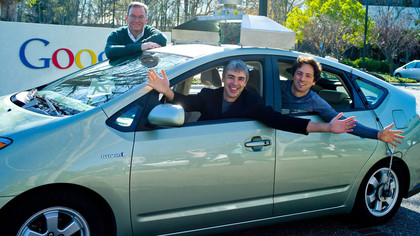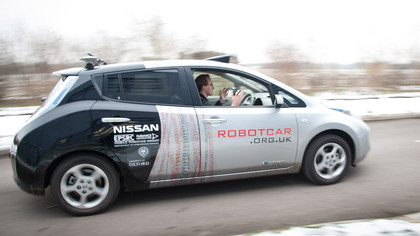Self-driving cars: the future of transport explained
When where and how will autonomous cars work?

Humans can't be trusted behind the wheel. They misjudge distances, drive aggressively, get distracted by other passengers, and many of them talk on the phone. Is it time to get rid of them and hand their driving licences over to the cars themselves?
Self-driving cars already exist, but whether or not they become a reality depends on whether the car industry can convince us to trust a machine to drive us around. That's rather ironic, because the core reason for developing self-driving cars is to remove human error from the process, and thus have far fewer road accidents.
Taking away human control is only partly about enabling you to read a book or play on your phone while sitting in the driver's seat. It's largely about making traffic safer, smarter and faster while maximising fuel economy. Fewer people will die on the roads and urban congestion will be reduced.
It could become the ride of your life, but it's likely to have a rather quaint start. In the beginning - and we're talking about the next few years - autonomous cars will probably go no further than 'driver assistance', occasionally nudging you along when in a slow-moving traffic.
Beyond that, think highly complex systems where your car talks to both other cars and city-wide traffic management systems, navigates by itself, and gets involved in follow-my-leader tech like platooning and road trains.
Search engine-eering
Google has sparked off the current interest in driverless cars. As well as having ambitions in the connected car sphere, the search engine giant has been busily testing its own self-aware cars for a few years.

Google's prototype is a Toyota Prius with built-in GPS and a 64-beam laser on its roof that builds a 3D model of the environments it drives through. Sensors in the sides of the vehicle look out for other cars and obstacles (such as people). Google reckons it will become a reality by 2018.
Sign up for breaking news, reviews, opinion, top tech deals, and more.
The driving force behind Google's experiments is proof of concept rather than universal use, but the availability of cheap sensor technology is a major factor in the driverless car going mass-market.
"Technology goes from a scarcity to a surplus," says Shawn DuBravac, the Consumer Electronics Association's chief economist and senior director of research. "Digital sensors were once scarce, but now nearly every single smartphone has a accelerometer, a gyroscope, multiple cameras and multiple degrees of measurement. Google's Driverless car drove 300,000 miles last year without a single accident, but it's just a bunch of sensors."
Meteoric rise
Cars with sensors might be new to most of us, but dash-cams are common around the world. Able to film the path of the meteor explosion over the Russian Urals in February, the dash-cams are there for insurance purposes. Similarly, cyclist in cities often wear helmet-cams to help apportion blame if there's an accident.
It's difficult to see smart cars with cameras not being used for this purpose globally, but there are issues of legality to be sorted out; if a self-driven car has an accident, who's to blame? The 'driver'/owner or the manufacturer? These questions haven't yet been thrashed out, but at least the driverless car is now gaining legal status.
Before such issues are sorted out, the technology has to be cheap enough for the mass-market, and that's the thinking behind a project called RobotCar. The brainchild of academics at Oxford University's Department of Engineering Science, the project's aim is to produce affordable self-driving car technology via 'machine learning'.

Its Nissan LEAF electric test car uses sensors to figure out exactly where it is in relation to both its surroundings and other vehicles on the road. As the car is driven (by a human) it builds a 3D model, and when it's next on the same journey it can take over the wheel and partly replicate what it did the previous time, at least in terms of the route. Called Auto Drive, the system runs on an iPad and cold cost as little as £100/US$150/AU$150.

Jamie is a freelance tech, travel and space journalist based in the UK. He’s been writing regularly for Techradar since it was launched in 2008 and also writes regularly for Forbes, The Telegraph, the South China Morning Post, Sky & Telescope and the Sky At Night magazine as well as other Future titles T3, Digital Camera World, All About Space and Space.com. He also edits two of his own websites, TravGear.com and WhenIsTheNextEclipse.com that reflect his obsession with travel gear and solar eclipse travel. He is the author of A Stargazing Program For Beginners (Springer, 2015),